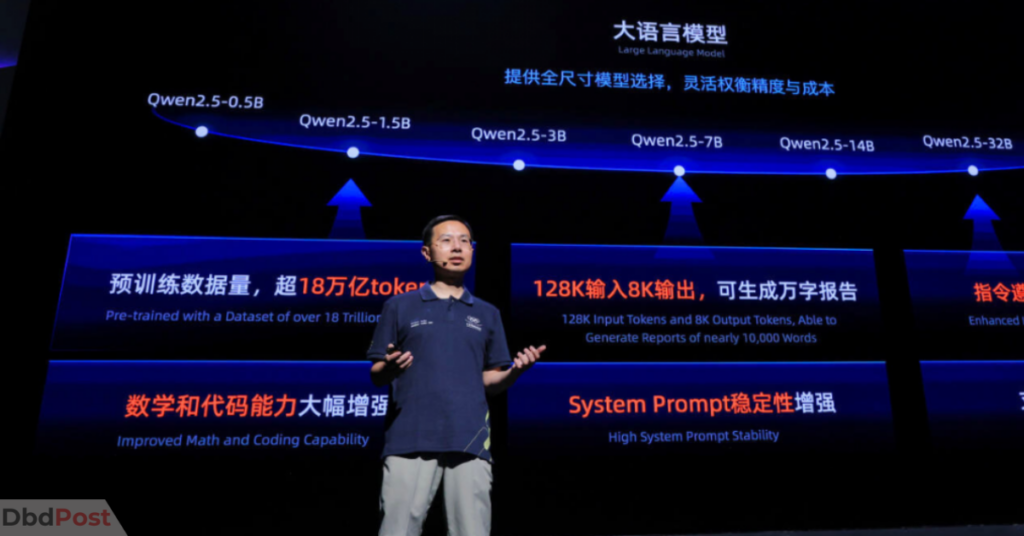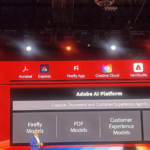Alibaba Cloud has released its latest artificial intelligence breakthrough. The Qwen2.5-Omni-7B model offers something new: a multimodal experience across text, audio, image, and video. Even better, it runs on edge devices like phones and laptops.
Most advanced models need massive servers. Qwen2.5-Omni-7B doesn’t. It works efficiently on smaller machines without losing the capabilities of larger models.
With 7 billion parameters, this AI model competes with larger systems. But it’s also lightweight enough for mobile use. It opens doors for developers and consumers alike.
At the heart of the model is a new architecture.
Alibaba Cloud calls it Thinker-Talker. It splits the task of understanding and responding. One part thinks in text, and the other speaks naturally.
Why does this matter?
It avoids overlap between tasks. Models that do everything in one pass often fumble. By splitting the responsibilities, Qwen2.5-Omni-7B produces better, more precise results.
Another key innovation is TMRoPE, which stands for Time-aligned Multimodal Rotary Position Embedding. It’s a mouthful, but the idea is simple.
TMRoPE synchronizes video and audio inputs, aligning what you see with what you hear, which is crucial for real-time interactions.
And it’s not just for playback. The model can analyze videos, understand the context, and respond with relevant information.
Then there’s streaming. No one likes lag.
Block-wise Streaming Processing solves that. It breaks down data and processes it in parts. As a result, the model responds quickly, especially with voice.
These innovations make the model ideal for real-time use. Think assistants, tutors, agents that talk like humans—and more importantly, ones that talk instantly.
Beyond the tech, there’s access.
Alibaba Cloud made the model open source. It can be found on Hugging Face, GitHub, and ModelScope. Developers can test, tweak, and build on top of it.
This open model fosters collaboration. Instead of gatekeeping, Alibaba encourages the AI community to contribute. It’s an invitation to innovate.
You can even test it through Qwen Chat—no setup needed. Just go online and interact with the model directly.
This kind of transparency is rare.
Most companies keep their top models closed. But Alibaba is taking a different approach. They’re betting on open-source ecosystems.
And it’s working.
It isn’t Alibaba’s first AI model. The company has released more than 200 generative models so far. But Qwen2.5-Omni-7B is the most versatile.
Because it works across modalities, it fits into countless scenarios.
Picture this. A visually impaired person walks into a new room. Their phone sees the space and describes it out loud. That’s Qwen2.5-Omni-7B in action.
Or think about cooking.
The model watches the steps when someone opens a video tutorial and offers real-time guidance. It can even warn them if they’re doing something wrong.
The possibilities in customer service are massive. AI agents powered by this model could handle complex, multimodal queries. They can see screenshots, hear complaints, and solve problems.
That’s no longer science fiction. It’s possible today.
What’s also interesting is how the model aligns with recent business shifts.
Similarly, BMW plans to integrate Alibaba AI into its upcoming vehicles. Drivers could soon talk to their cars like they talk to people.
These moves highlight Alibaba’s growing influence. Once known mainly for commerce, the company is fast becoming a serious AI contender.
And there’s a strategy behind that.
Alibaba Cloud aims to lower the barrier to entry for generative AI. Instead of building models only for data centers, they focus on edge devices. That’s where the next big wave of AI could live.
Most users don’t have supercomputers. But almost everyone has a phone or a laptop. By optimizing for these tools, Alibaba reaches a broader audience.
Also, it saves money.
Cloud inference costs are high. Running models locally cuts those expenses, a massive plus for startups and solo developers.
The implications stretch beyond cost.
Running AI locally also means better privacy. Data doesn’t have to go to the cloud. Sensitive information stays on your device.
It opens up possibilities in healthcare and finance, where data compliance is strict. Local inference could be the solution.
But what about limitations?
Despite all the buzz, the model still has constraints. It’s powerful but won’t replace massive systems like GPT-4 or Gemini Ultra. At least, not yet.
Like all generative models, Qwen2.5-Omni-7B can still produce errors. AI hallucination remains a concern, which is why Alibaba encourages human-in-the-loop systems.
Still, the model is impressive for its size. It packs multimodal reasoning into a more diminutive form, and that’s no small feat.
The timing couldn’t be better.
Multimodal AI is the next frontier. Text-only models are reaching a plateau. Users want more immersive, natural, and context-rich interactions.
Models like Qwen2.5-Omni-7B move the industry forward. They turn that vision into an actual product.
And developers are paying attention.
Thanks to open access, researchers are already experimenting with Qwen2.5-Omni-7B. Some are building apps, and others are studying their efficiency or robustness.
This feedback loop will improve future versions. It may also help define what responsible multimodal AI looks like.
Of course, competition is fierce.
Google, OpenAI, Meta, and others are racing to build better models. Alibaba isn’t alone. But its approach—lightweight, open, and device-ready—is different.
And that difference could matter.
As AI becomes more personalized and embedded, smaller models may win. Not every use case needs 100 billion parameters. Sometimes, speed and focus are more valuable.
In that sense, Qwen2.5-Omni-7B represents more than a product. It’s a signal—a shift toward usable, scalable AI for real life, not just labs.
Whether guiding someone through a recipe or helping a customer fix a printer, it works. And it works now.
The model shows how far AI has come—and where it’s headed.
With tools like this, developers don’t just dream up ideas. They build them.
- 107shares
- Facebook Messenger
About the author
Driven to stay up-to-date with the latest technological advances, Harry Evans is an enthusiastic computer science B.Sc graduate and tech specialist with a wealth of experience in technical support, IT process analysis, and quantitative research. His expertise explores how various technology tools can effectively solve complex issues and create distinct solutions through data-driven processes. Additionally, he is passionate about educating others on the best ways to use these new technologies.





